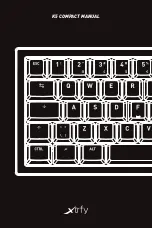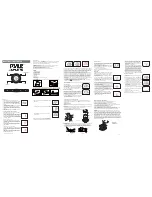
NORD ELECTRO 2 V2.0x
9. History: The story behind the Electro 2 instruments
Page 59
T
T
T
T
H
H
H
HE
E
E
E
W
W
W
W
U
U
U
UR
R
R
RL
L
L
LIIIIT
T
T
TZ
Z
Z
ZE
E
E
ER
R
R
R
EP
EP
EP
EP
The next instrument to be sampled for the Nord Elec-
tro 2 is the Wurlitzer electric piano model 200. What
became the Wurlitzer electric piano was originally de-
signed by Benjamin Franklin Miessner, born in 1890.
An American inventor who became involved with inno-
vations in radio during his early years, Miessner de-
signed an electro-acoustic instrument pick-up in 1921.
A company called Amperage manufactured it for gui-
tars in 1928. After selling his radio patents to RCA in
1930, Miessner set up a laboratory to develop his ideas
on electrifying musical instruments with the goal of cre-
ating small, affordable electric pianos for educational
use. He experimented with ways of amplifying the
strings in an acoustic piano that lacked a sound board,
and he filed a patent for this design in 1931. Miessner
continued to develop his theories and give the piano a
more powerful tone. He began incorporating metal
reeds in place of strings because the reed timbre and the
decay of their vibrations sounded superior to the mud-
dy quality of the soundboardless strings.
At this point Miessner's concept garnered lots of interest from
piano manufactures around the country. His ideas reached the
big jukebox and organ company, Wurlitzer, where someone re-
alized the invention had great potential. Wurlitzer bought the
patent and the rights to make this instrument and immediately
started the development of an electric piano. They wanted to
produce an electric piano similar to the Rhodes, but with a more
piano-like action and sound. The basic design incorporated felt-
dressed hammers similar to those in an acoustic piano to stroke
the metallic reeds. The vibrations from the stroke on the reeds
produced a big, fat, rich tone, which was sensed by the electro-
static pick ups, amplified and routed to the built-in speakers on
the front of the piano. In the patent text from 1959, which
Miessner had originally filed in 1950 with Wurlitzer as the as-
signee, you can understand his intentions and design goals. He
wanted to built a compact, lightweight instrument with a real pi-
ano action. It was also important that the piano sound like an
acoustic piano. Miessner declared that his invention would solve
the tuning problems associated with acoustic pianos.
A Wurlitzer 200A electric piano -- the most popular
Wurlitzers model ever built. If you compare a Wurl-
itzer with a Rhodes, you find the Wurlitzer a little
more compact. The Wurlitzer came with 64-note
range A to C.
The patent for an ‘Electronic Piano’ filed
by Benjamin Franklin Miessner in 1950.










































